This post may contain affiliate links. Please read my privacy policy.
Cotton soft, light, fluffy and the best Japanese cheesecake. This is a tried and tested Japanese cheesecake recipe. A must-bake for cheesecake lovers!
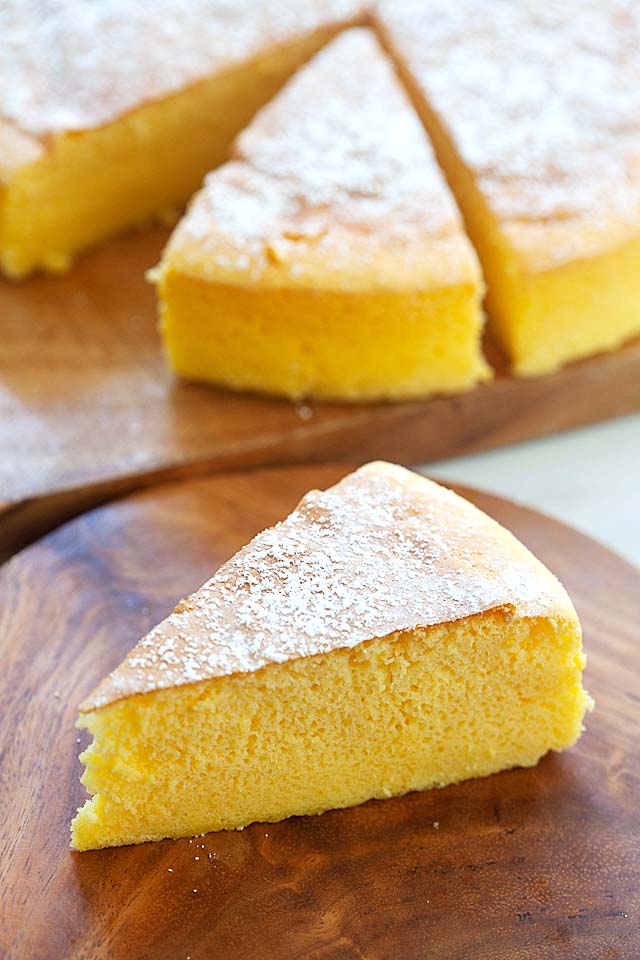
Japanese Cheesecake Recipe
Japanese cheesecake is very different from regular cheesecake.
It is cotton soft, light, fluffy and the one of the best cheesecakes I have ever tasted.
Japanese cotton cheesecake is also jiggly, due to the meringue egg white mixture in the recipe.
Make this and I will guarantee that you will never go back to regular cheesecake again!
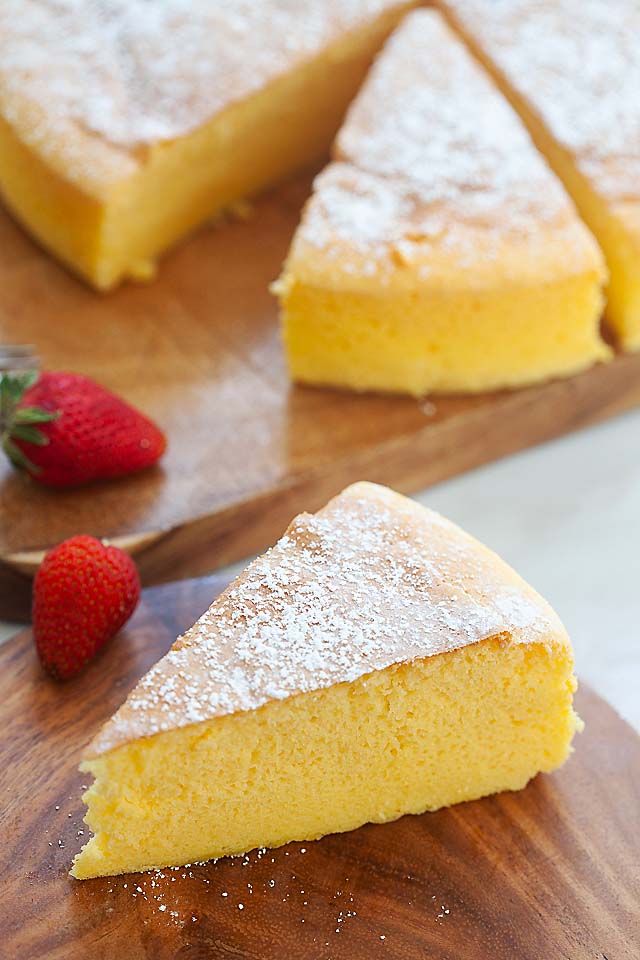
Ingredients
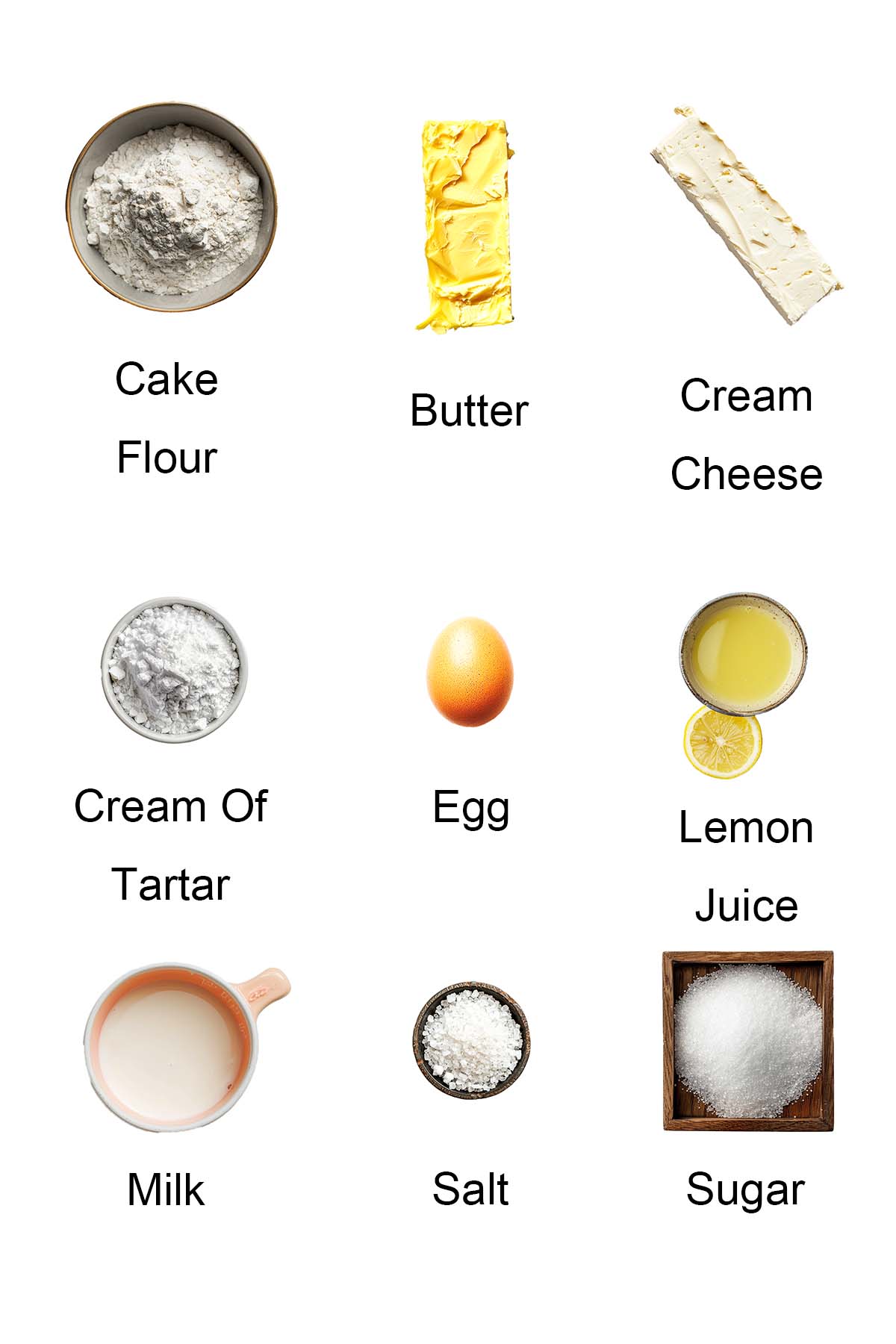
- Cream cheese
- Butter – use a good quality butter for the best results. In the United States, I always buy Challenge butter.
- Milk
- Cake flour – this lower gluten flour is idea for the cotton soft, spongy and airy texture.
- Corn starch
- Eggs
- Sugar
- Cream of Tartar – this is the secret ingredient that stabilizes the tiny bubbles in the egg white meringue. It prevents the egg proteins from sticking together, hence holding the bubbles together for the jiggly and spongy texture of this cheesecake.
- Lemon juice
Please take note that there is no baking soda or baking powder in the ingredients list as the meringue mixture will ensure that the cake rise tall.
See the recipe card for full information on ingredients.
How To Make Japanese Cheesecake
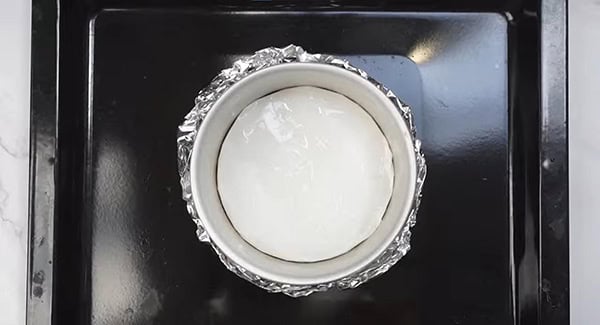
Step 1: Preheat oven to at 325°F (160°C). Prepare and measure all the ingredients and set out on your working area. I used a 9-inch springform pan. Grease the entire pan and line the bottom part with parchment paper. Please refer to notes if you use other pan.
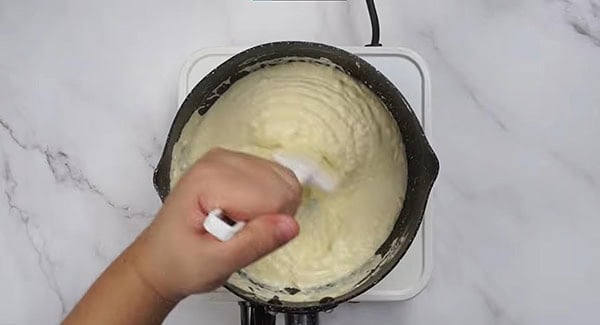
Step 2: On a stove top, melt cream cheese, butter and full milk on low heat. Use a whisk to mix well until the cream cheese melts completely without lumps. Remove from heat.
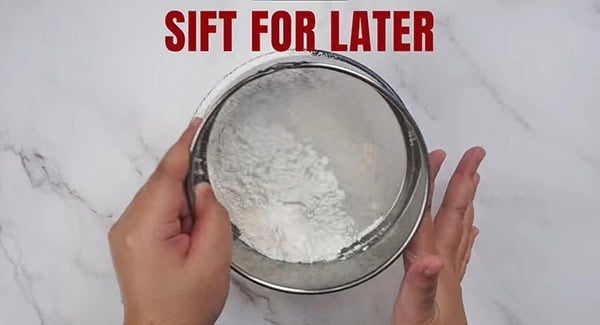
Step 3: Sift the cake flour and corn starch.
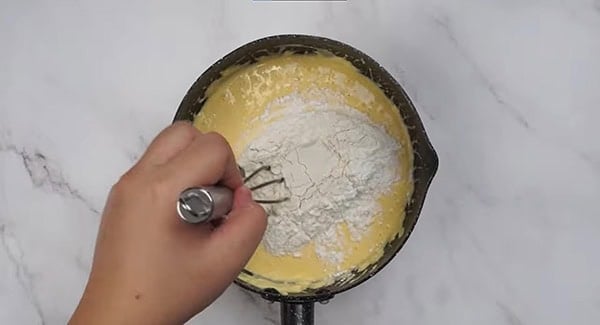
Step 4: Add egg yolks, lemon juice and salt to the cream cheese mixture. Whisk to combine well. Add the cake flour and corn starch, whisk until a smooth batter forms and there is no lump.

Step 5: Make the meringue by whisking egg whites, sugar and cream of tartar until light, foamy and soft peaks form. You can beat with a stand mixer or electronic hand mixer. I used speed 4 and beat for 1-2 minutes or until soft peaks form. DO NOT over beat.
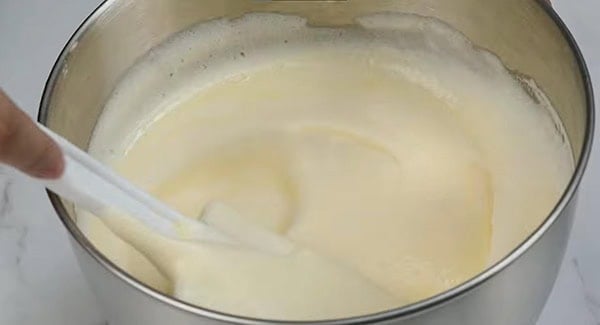
Step 6: Add the cream cheese mixture gently into the meringue, FOLD GENTLY until well incorporated.
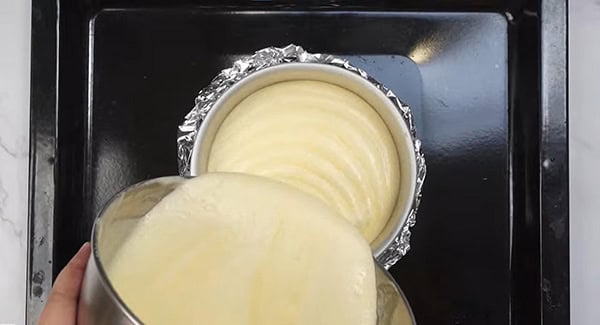
Step 7: Pour the mixture into the springform pan. Tap the cake pan gently before baking.
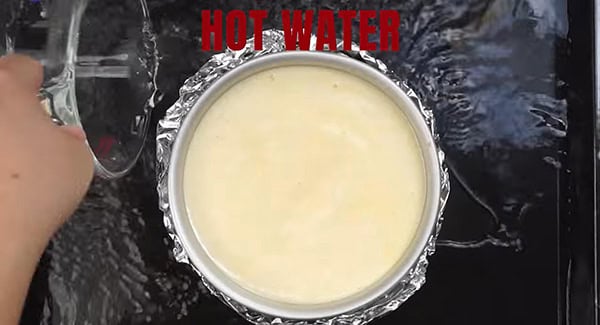
Step 8: Bake the cake using hot water bath. Place the cake pan in a larger pan and add 1 inch (2.5cm) of hot water in the larger pan. Bake at the bottom shelf of the oven for 1 hour 10 minutes.
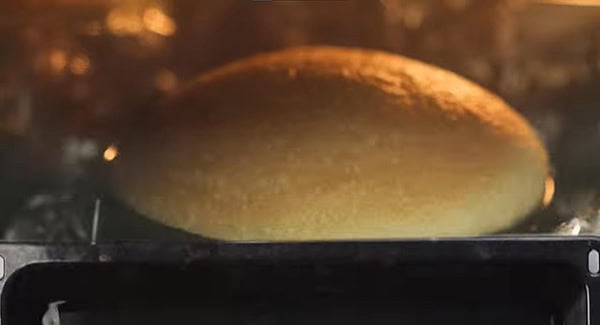
Step 9: Leave the Japanese cheesecake to cool down in the oven with the oven door open, about 30 minutes. This will prevent sudden change of temperature that may cause the cake to shrink. However, it’s normal that the cake will shrink about 1/2 – 1 inch (1cm-2.5cm) after cooling.
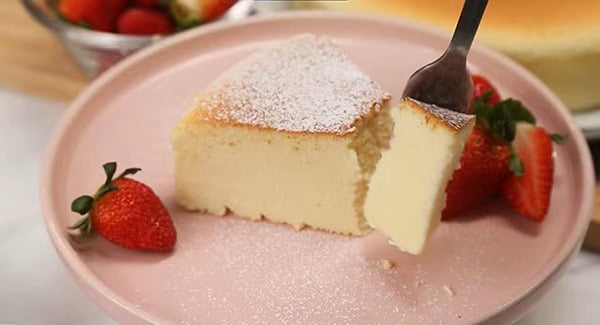
Step 10: Refrigerate the cake (with or without the cake tin) for at least 4 hours or overnight. Top the cake with powdered sugar before serving.
Baking Tips
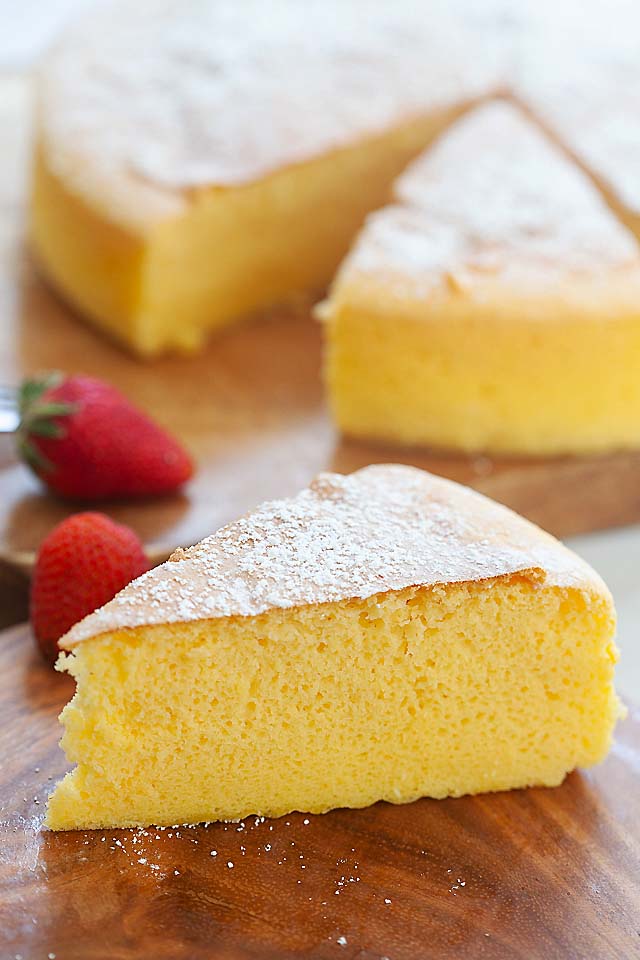
Even though DIY and homemade Japanese cheesecake is relatively easy, there are potential troubles when the cake turns out less than perfect.
For the best, jiggly and perfect result just like Uncle Tetsu, here are the tips and tricks:
- Make sure you have a smooth cream cheese mixture that is not lumpy.
- Use room temperature eggs to ensure that the meringue has the maximum volume.
- Make sure your egg whites are beaten until soft peaks form. Dot not over beat, we don’t want stiff peaks.
- DO NOT OVER MIX the meringue with the cream cheese batter. Fold very gently, do not stir or blend as the bubbles in the meringue will disappear.
- To avoid the sudden drop in oven temperature and room temperature, leave the cake in the oven with the oven door open. This will make sure that the cake doesn’t lose volume and sink.
- To avoid cracking at the top, please make sure you use a water bath for baking. The steam from the water will circulate in the oven, hence minimizing cracking at the top.
- To avoid over browning, bake the cake at the bottom part of your oven.
- Before you start baking, make sure you have all the ingredients measured up and ready. This is very important because every step has to be very precise.
Frequently Asked Questions
You can keep it in the refrigerator for a couple of days.
You shouldn’t have to worry about the leftover because this is the best cheesecake ever, and I can assure you that you won’t have anything left to keep for more than a day!
Other than springform pan and round cake tin, you can also use a 8×8-inch or 9×9-inch square pan. You can also make them into cupcakes by using cupcake tins.
Yes, you sure can. You may add 1 – 2 tablespoons of matcha powder in the cream cheese mixture if you like.
Japanese cheesecake has the lowest calories of all cheesecake. Each slice is only 214 calories.
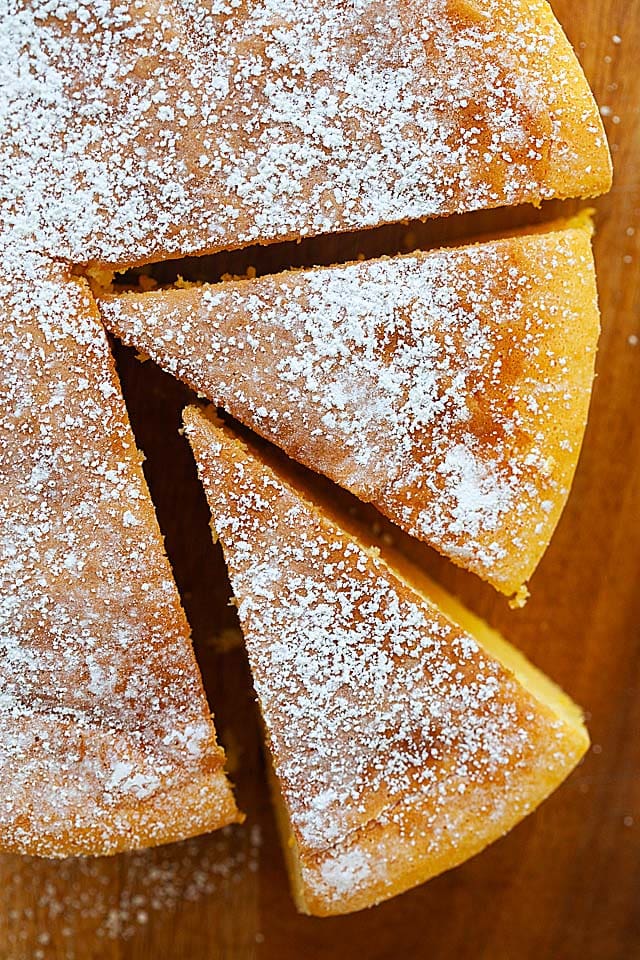
What To Serve With This Recipe
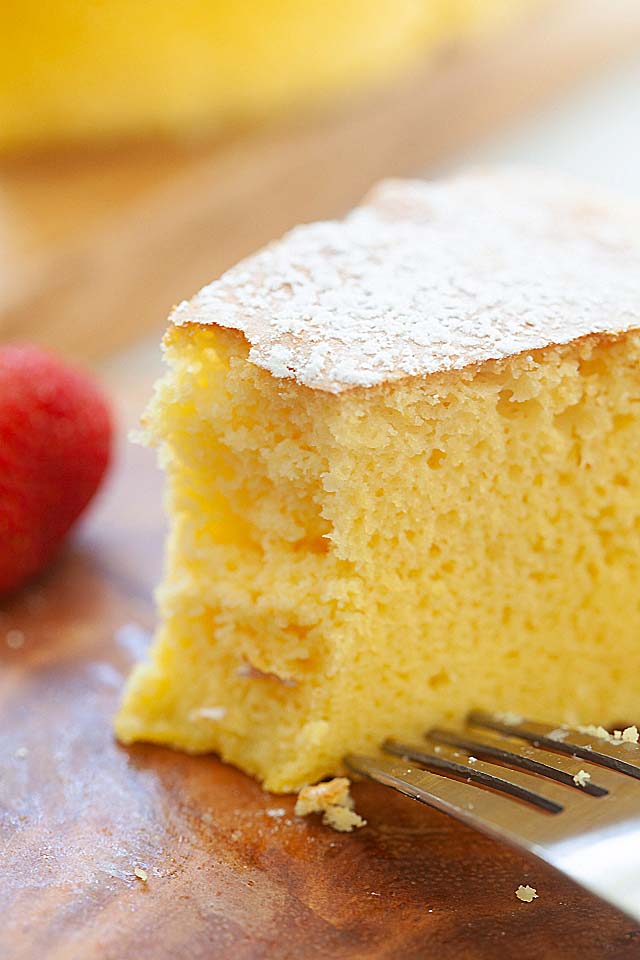
Japanese cheesecake is best served on its own, with your favorite cup of tea or coffee. For an afternoon tea, make the following desserts to go with it.
I hope you enjoy this post as much as I do. If you try my recipe, please leave a comment and consider giving it a 5-star rating. For more easy and delicious recipes, explore my Recipe Index, and stay updated by subscribing to my newsletter and following me on Facebook, Pinterest, and Instagram for new updates.
Other Recipes You Might Like
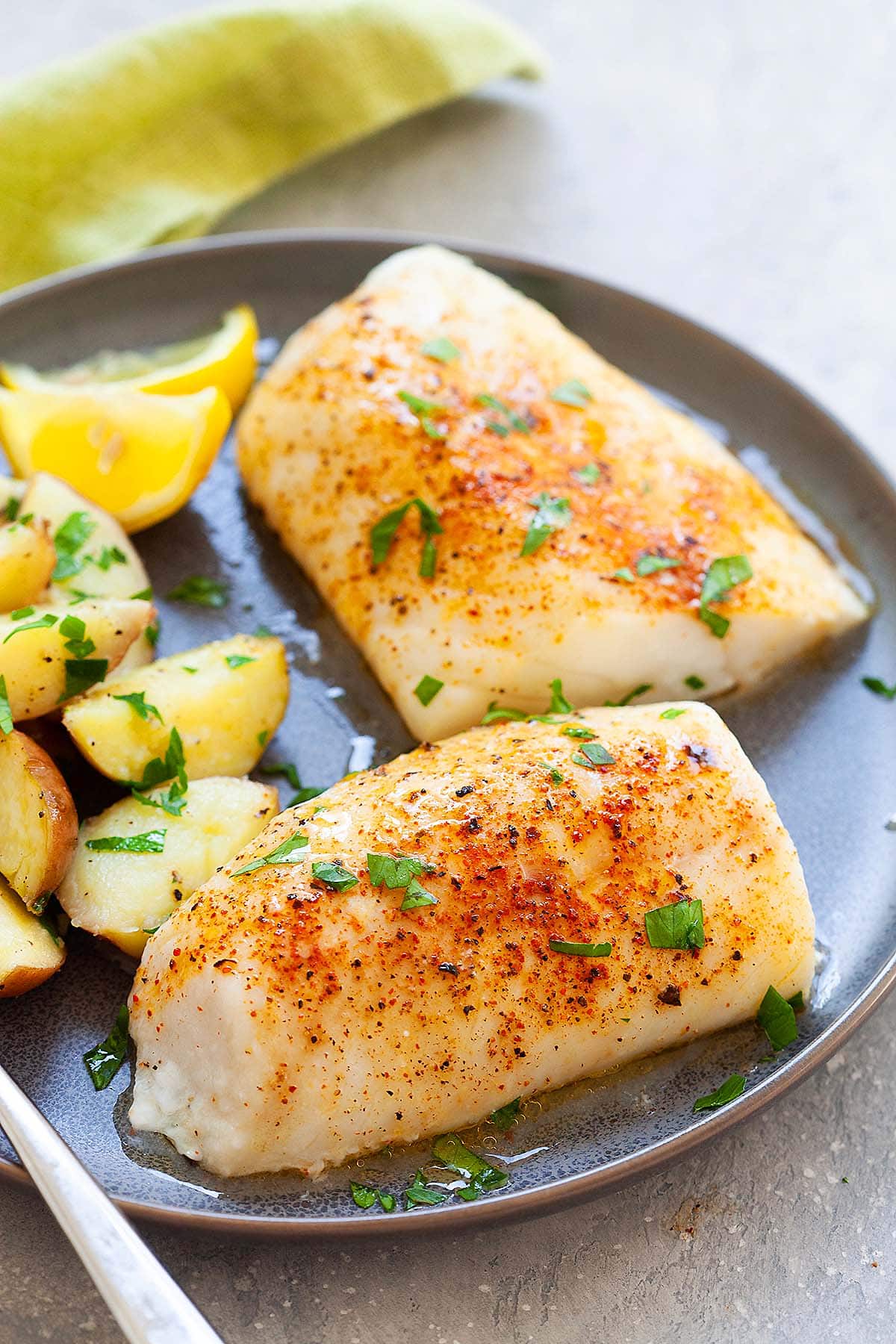
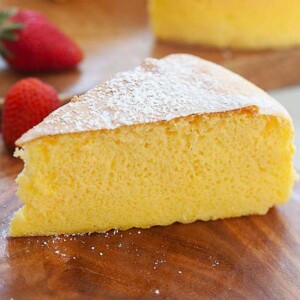
Japanese Cheesecake (Fail Proof Recipe)
Ingredients
- 8 oz (230g) Philadelphia cream cheese
- 2 oz (60g) unsalted butter
- 100 ml full milk
- 2 oz (60g) cake flour
- 1 oz (30g) cornstarch
- 6 egg yolks, room temperature
- 1/2 tablespoon lemon juice
- 1/4 tsp salt
- 6 egg whites, room temperature
- 1/4 teaspoon cream of tartar
- 5 oz (140g) fine granulated sugar
Instructions
- Preheat oven to at 325°F (160°C). Prepare and measure all the ingredients and set out on your working area. I used a 9-inch springform pan. Grease the entire pan and line the bottom part with parchment paper. Please refer to notes if you use other pan.
- On a stove top, melt cream cheese, butter and full milk on low heat. Use a whisk to mix well until the cream cheese melts completely without lumps. Remove from heat.
- Sift the cake flour and corn starch.
- Add egg yolks, lemon juice and salt to the cream cheese mixture. Whisk to combine well. Add the cake flour and corn starch, whisk until a smooth batter forms and there is no lump.
- Make the meringue by whisking egg whites, sugar and cream of tartar until light, foamy and soft peaks form. You can beat with a stand mixer or electronic hand mixer. I used speed 4 and beat for 1-2 minutes or until soft peaks form. DO NOT over beat.
- Add the cream cheese mixture gently into the meringue, FOLD GENTLY until well incorporated.
- Pour the mixture into the springform pan. Tap the cake pan gently before baking.
- Bake the cake using hot water bath. Place the cake pan in a larger pan and add 1 inch (2.5cm) of hot water in the larger pan. Bake at the bottom shelf of the oven for 1 hour 10 minutes.
- Leave the Japanese cheesecake to cool down in the oven with the oven door open, about 30 minutes. This will prevent sudden change of temperature that may cause the cake to shrink. However, it's normal that the cake will shrink about 1/2 – 1 inch (1cm-2.5cm) after cooling.
- Refrigerate the cake (with or without the cake tin) for at least 4 hours or overnight. Top the cake with powdered sugar before serving.
Video
Notes
- If you use a springform pan or loose base cake tin, make sure it’s closed tight. It’s best to wrap the base of your pan with 2 layers of aluminum foil (outside of the pan) to prevent the water bath from seeping inside the bottom part of the cake.
- If you use a 8″ round pan, it is very important to line the sides of the 8″ pan with parchment paper, make sure the parchment paper extends higher than the cake tin by about 1.5″.
- If you use a 9″ pan, you can line the bottom part and not the sides. You may line the entire pan with parchment paper, if you like.
- You can also use an 8-inch or 9-inch square pan.
- If the cake shrinks too much, the main reason is over mixing the egg white mixture with the cream cheese mixture.
- Beat the egg whites until soft peaks form, FOLD VERY GENTLY using a flipping motion.
- Do not stir or blend vigorously.
Nutrition
Nutrition information is automatically calculated, so should only be used as an approximation.
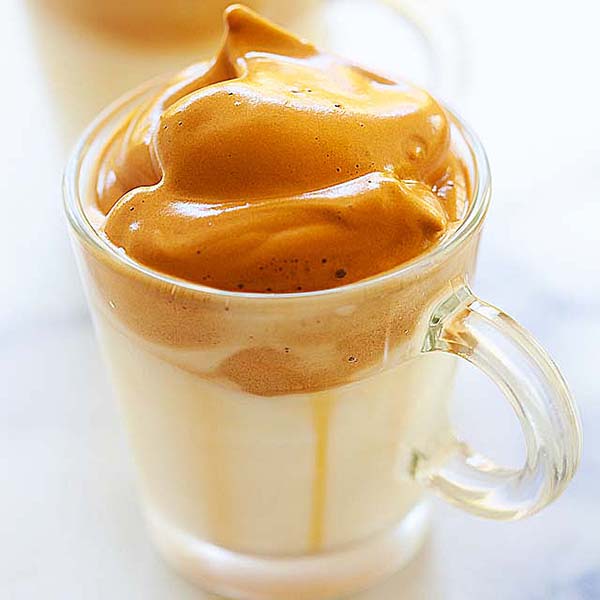
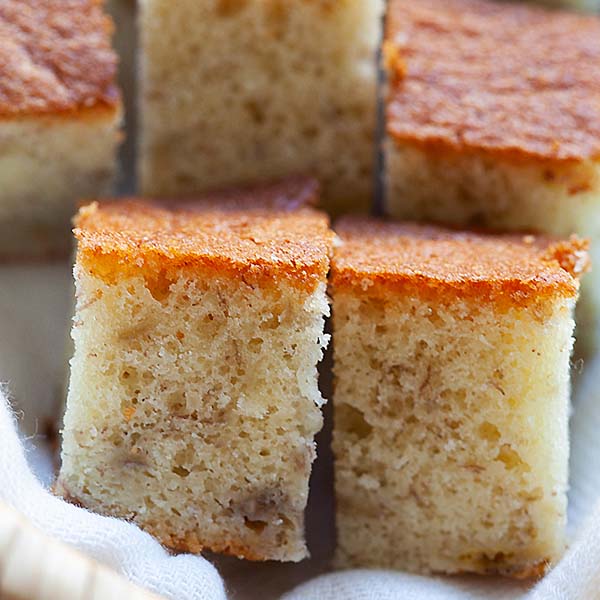
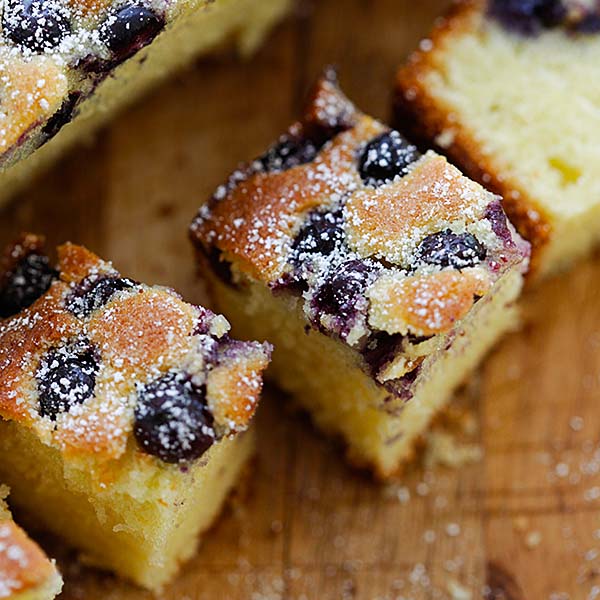
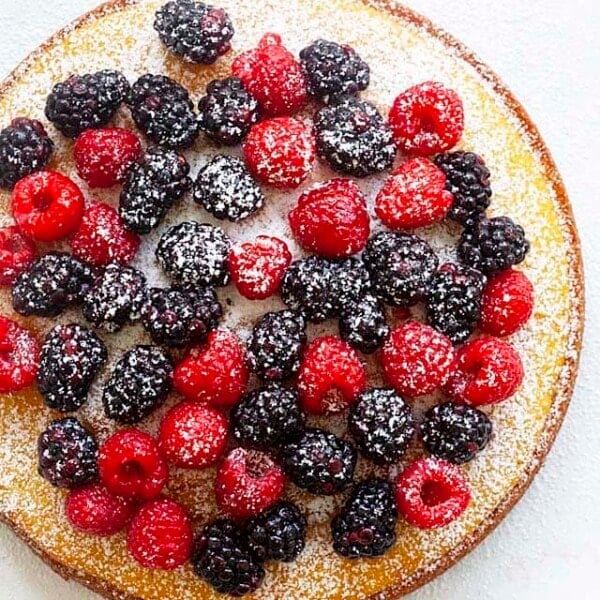






Thank you so much for your detailed recipe!
I tried baking this today, but it turned out so dense and rubbery… :(
Because I can’t have dairy, I wrap all dairy ingredients to (vegan cream cheese, soy milk and vegan butter), could that be the reason?
You can’t substitute the ingredients to vegan and expect the same results. Sorry.
Hi I make this with tofutti cream cheese, vegan butter and soy milk. It turns out fine for me. I add a touch more sugar and lemon juice and I also add vegan white chocolate. I still use egg as I’m not vegan, just dairy free. Maybe your egg white list it’s airy ness in transfer?? Did you bake it super slow in a water bath?? I use a spring form tin in a plastic bagging bag in the tin of water to ensure it stays water tight. It can definitely be made dairy free and mine never lasts long when I make it, everyone, dairy free or not loves it. I currently make this gluten-free and dairy free to suit all dietary requirements at work.
Hi there! This recipe is absolutely amazing so thank you! I wanted to try a matcha version next. How much matcha do you suppose should be added and do I need to increase the sugar or decrease the flour? Looking forward to your input!
Hi Mav, I have no idea as I haven’t tried baking Japanese cheesecake with matcha. You can try out and let me know! :)
Rasa, great recipe but how did you get the cake out of the cake pan? I used parchment paper on the bottom of the pan and around the sides but couldn’t get it out. Please answer the question.
Thanks Maria
Well, just loosen the parchment and take take them out of the cake pan.
Hi Rasa,
Thank you for your recipe, my cheese cake is still cracked. I will try more.
However, I remember I used to find in your blog the cheese cake recipe which use whipping cream, and at that time I tried that recipe and I really succeed with that recipe.
Can you re-post that recipe ?
Hi Maggie, I am not sure why cheesecake recipe is that, please search for cheesecake on the site.
Hi Rasa Malaysia,
I have failed my cheesecake 4 times
Appreciated if you could help me on this?
My cake turned up to be top fluffy and the bottom was not. is it cause of the folding method?
If your bottom was not, it meant your egg white meringue is not beat to soft peaks. They need to be foamy.
I made this cake and it was somewhat a success. I find that the cream cheese mixture doesn’t fold well with the flour mixture. Is it okay to use an electric mixer for that? The cheesecake also have a lot of “egg” taste to it, is it possible to use 5 eggs instead of 6? Or maybe change the egg yolk from 6 to 5? What do you think?
I wouldn’t change anything in the recipe and method because this Japanese cheesecake is very sensitive!
Hello, I have attempted this recipe twice following it to the last detail and both times it came out beautiful looking and the consistency was perfect but they both tasted like the film left on the bottom of the pan after scrambling an egg. The batter tasted amazing before and after folding in the meringue. Not even a hint of egg flavor but once baked it tastes nothing like cheese cake, just egg. Please please please tell me what I am doing wrong. Thank you in advance.
Hi Matt, Japanese cheesecake is very different from regular cheesecake.
Hi there. Can I replace Cream of Tartar with any other ingredients? As I doesn’t seem to get one here in my area.
Hello,
When I keep the temperature low, around 300, the cakes rise nicely and don’t crack but they remain palr. When I raise the temperature, they become brown but they crack. As the cake falls however, the cracks close again and just look like “scars”. I camiuflaged this with frosting but love the powdered sugar so much more.
Any suggestions.
Also: after using powdered sugar you better din’t refrigerate beacuse then the sugar disappears.
Notwithstanding all of the above, I am becoming famous because of this cake.
Kind regards,
John
This is the second time I made this cake. The first time I used a springform and double wrapped it in foil. Some water still got in somehow, so some parts in the bottom were soggy. I think the water went in after I took it out of the oven and had it cooled on the stovetop. Taste was still great though, I like that it’s not very sweet and so did out dinner guests (for most people in the US it wouldn’t be sweet enough at all, but they can always add syrup on top, right?)
Today I made them in Muffin tins lined with good parchment wrappers. Still in the water bath of course.
I baked them for 35 min and so far they look perfect. I added mango-passionfruit-orange preserves to some of them and they seemed to have handled it well (I wasn’t sure with the preserves being so much heavier than the batter).
I also beg to differ and say, they are delicious straight out of the oven already (I had to test one to see if they’re done).
Oh, I also substituted the wheat flour with Masa harina to make it gluten free for one of my friends.
By the way, unknowingly at the time, across the ocean, my dad made a Mango -Passionfruit Cheesecake today, too. Must be in my genes =)
Hi Sabine, so happy to know that you tested this Japanese cheesecake with great success.
i tried this yesterday , the taste was good but it cracked after 50 minutes, is there any advice to avoid the cracking next time
Give your oven temperature a second look. Most ovens are calibrated inaccurately, leaving you unaware that you’re baking at a temperature above or below what your recipe specifies. It is helpful to purchase an oven thermometer to test the temperature and then adjust as needed.